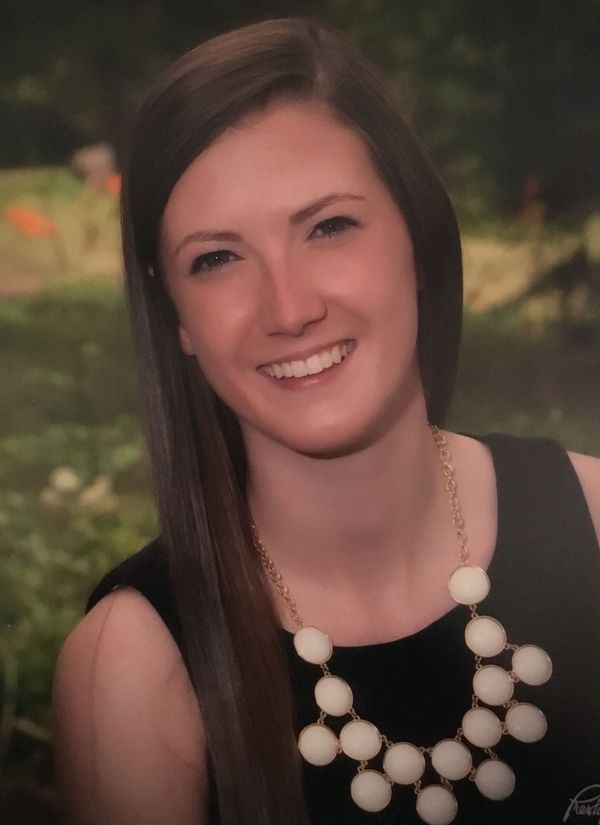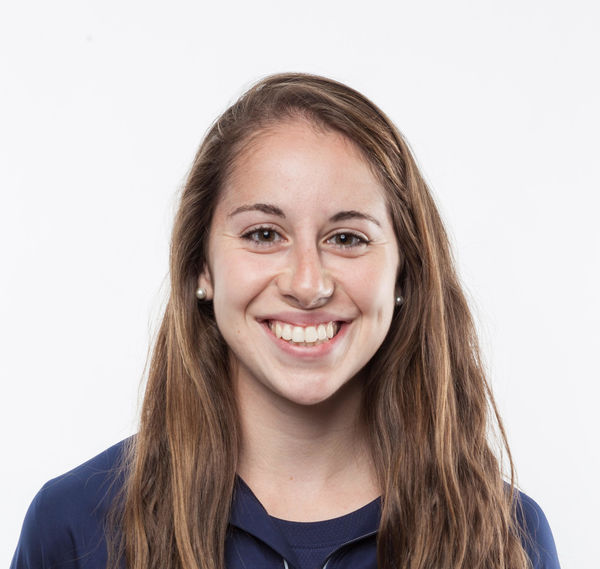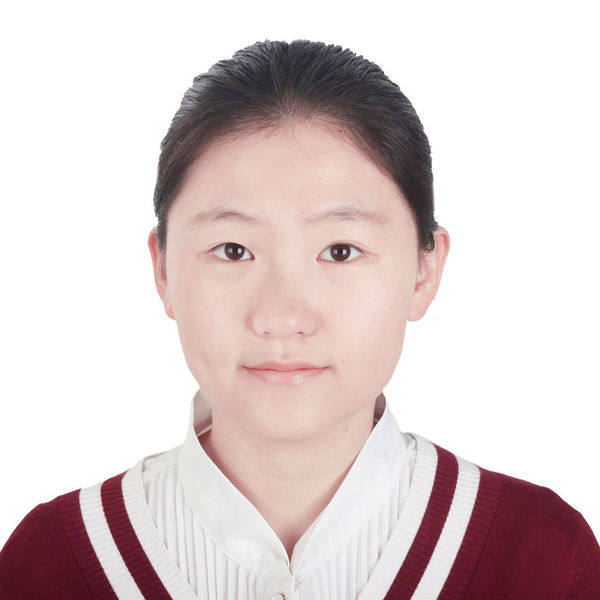Andrew Appert, Funded by the Barbara Cahill and Missy Cahill McKnight Grant
This past summer, I had the privilege of working as a research assistant in Dr. Richard Dahl’s lab. The lab is broadly interested in hematopoiesis, the development of the different cell types of the blood. Since this process of cell differentiation and maturation is quite complex, there must be many regulatory factors involved, and Dr. Dahl’s lab focuses specifically on the role of small molecules called microRNAs in this process as well as what role they play when hematopoiesis goes wrong, potentially giving rise to cancers. The majority of my project this summer involved working on an EML cell line, which was generated from the bone marrow of mice. We used the EML cell line because the cells model hematopoietic stem cells (HSCs), the “precursor” cells from which our own blood cells develop. The mice varied in genotype for the presence or absence of two microRNAs (mirn23a and mirn23b) the Dahl lab had previously published as being crucial to proper HSC functioning. After isolating proteins from the EML cells via whole cell lysates and nuclear extracts, we were able to run Western blots to look at proteins specifically associated with stemness in order to investigate the regulatory roles of mirn23a/b and identify the molecular pathways they are involved in to maintain the fitness of these stem cells.
My time as a research assistant this summer allowed me to develop my skills in the lab, as I learned how to efficiently carry out a number of assays, such as whole cell lysates, Western blots, and BCA. I also gained a fair amount of confidence and experience working in a tissue culture setting, which is quite different from standard bench work. Additionally, I developed lot of understanding on the theory behind the project the Dahl lab focuses on, and on hematopoiesis within the context of cancer in general. I enjoyed not having to balance working in the lab with the normal course-load of a semester at Notre Dame, as this makes it much harder to come into lab for extended hours and consecutive days during the academic year. I was able to make the lab my primary focus during the summer, and in doing so I learned and accomplished much. In terms of being in South Bend during the summer, I really enjoyed the weather, as well as the fact that Notre Dame’s campus was much quieter with most of the student body gone. My sincerest thanks to Harper for awarding the Dahl lab the funding through SURF for me to work there for the summer, and to the donors who have been generous enough to provide Harper with the funding necessary to make SURF possible. My summer experience gave me the technical skills and scientific knowledge to move into my senior year ready to work on a project of my own, which I will develop into a thesis for the Glynn Family Honors Program.
Kiera Dwyer, Funded by the David and Kathleen Taiclet Endowment for Excellence
 Kiera Dwyer, Class of 2019
Kiera Dwyer, Class of 2019
Through the Summer Undergraduate Research Fellowship (SURF), I was able to study the role of multigenerational obesity on the development of breast cancer. Obese, postmenopausal women experience a 20-40% increased risk of developing breast cancer. Today, with 1 in 3 adults considered obese, investigating the link between obesity and breast cancer development may lead to unique insights into the treatment of breast cancer in obese patients. Therefore, I spent the summer developing a 3D engineered breast tissue to model the microenvironment of obese and lean breast tissue. From this model, cancer cells can thus be grown in order to narrow down the factors that may lead to increased cancer growth in obese environments.
From this incredible experience, I learned a number of new technical skills in analyzing 3D cell cultures and developing a tissue model. My favorite part of this research was being able to being able to brainstorm creative model ideas and bring them to life in the lab. Outside the lab, I enjoyed the South Bend summer, going to South Bend Cubs baseball games, the State Park dunes and blueberry picking. This semester I plan to continue this research and develop a senior thesis. Next year, I hope to pursue graduate school in a Bioengineering-field.
Emily Franz, Funded by the Dobrovic Family Endowment for Excellence
 Emily Franz, Class of 2019
Emily Franz, Class of 2019
This summer I was blessed with the opportunity to work on research in Dr. Stack’s lab through the Summer Undergraduate Research Fellowship. Broadly, this research focused on the connection between ovarian cancer proliferation and obesity. My area of research specifically concentrated on a master regulator of de novo lipogenesis—a transcription factor involved in the metabolic transformation of the ovarian cancer cell—called sterol regulatory element binding protein 1 (SREBP1). As shown previously by Stack lab, under conditions of diet-induced obesity, ovarian cancer tumors grown in mice fed a Western diet (40% fat) exhibit increased lipid content and overexpress SREBP1. To better understand the effect of SREBP1 within an ovarian cancer cell, many of my experiments involved inhibition of nuclear-localized SREBP1. A variety of techniques were utilized to analyze the effect of the inhibitors on the ovarian cancer cells including immunocytochemistry, Western blots, and MCC assays. This research will continue into the school year, with the hope of publication soon.
With the goal of continuing in research to achieve my PhD in cell biology, the research I completed this summer provided critical experience. I learned various techniques and methodologies and contributed to the direction of the research. Through this, my understanding of the life and rigor of a PhD student and research scientist grew. Ultimately, I gained a strong appreciation for the hard work, methodology, and impact of scientific research. This summer truly allowed me to develop further academically and provided a more profound understanding of a research career in science. Additionally, while I truly enjoyed this academic growth in research, what I most enjoyed was the lab community. The Stack lab environment is so friendly, and I was blessed to be able to cultivate relationships here. Contrary to what some may think, lab work is not a solitary job. Through the lab community, I was reminded to keep in mind the person—both those persons around me and those I could be helping through this research. As I realized this summer, this research contributes to society, and the way the lab community interacts while researching drives the recognition of the humanity it ultimately serves.
Xiao Han, Funded by the Kirkland Family Endowment for Excellence
 Xiao Han, Class of 2019
Xiao Han, Class of 2019
The objective of my summer research is to investigate the potency of peroxynitrite on cell viability of prostate cancer cells, human normal prostate cells as well as human T cells. By applying WST-1 and MTT assay, I compared the sensitivity of different cell lines to peroxynitrite treatment according to their IC50 value. The reason to do the cell proliferation assay by both MTT and WST-1 is to make sure the results are concrete and reliable. These results will provide some crucial database for the further investigation of the mechanism of myeloid-derived suppressor cells inhibit T cell activation through nitrating LCK in mouse cancers.
I learned to utilize GraphPad Prism, a software boosts scientists to analyze data, to visualize the cell proliferation curve and calculate the IC50 value. I appreciate the enlightening suggestions from my mentor, Dr.Xin Lu, who encouraged me to design the experiments and analyze data completely on my own. This provided me a precious opportunity to think independently and to be self-critical. The summer research experience taught me to do science more than just carry on the experiments, but also to think about the reason underneath the results in a scientific way.
John Heffernan, Funded by the JR & JS Walsh Endowment for Excellence
Current treatments for Gliomas are highly individualized and often rely on radiation. These tumors have high mortality rates because of their location and biological barriers to drug delivery imposed by the Blood-Brain Barrier (BBB), which renders typical cancer therapeutics, delivery mechanisms, and diagnostics ineffective. The BBB is a complex and heterogenous system that establishes pristine control over substances into the brain. My work aimed to use liposomal nanoparticle drug delivery systems to overcome these challenges. Liposomal nanoparticles are spherical lipid-based nanoparticles formed by a lipid bilayer enclosing a water compartment. Their surfaces are covered in polyethylene glycol to reduce nonspecific interactions and can be conjugated with peptide sequences designed to target cells in the BBB with high selectivity and efficiency such that the therapeutics can enter the brain through transcytosis.
The project offered me the opportunity to combine concepts of thermodynamics, biochemistry, and bioengineering to best characterize the many parameters of this problem. I am fascinated by the magnitude of possibilities that need to be tested to find the optimal delivery method for the most patients. Controlling the many variables experimentally tested my understanding and creativity as an engineer. Additionally, certain experiments certainly required a copious amount of patience and diligence. The experience shaped my understanding of drug development and the intricacies of all research endeavors. I have a newfound interest in cellular biology because so many mechanisms remain mysteries. I plan to carry this curiosity with me as I continue to explore human health.